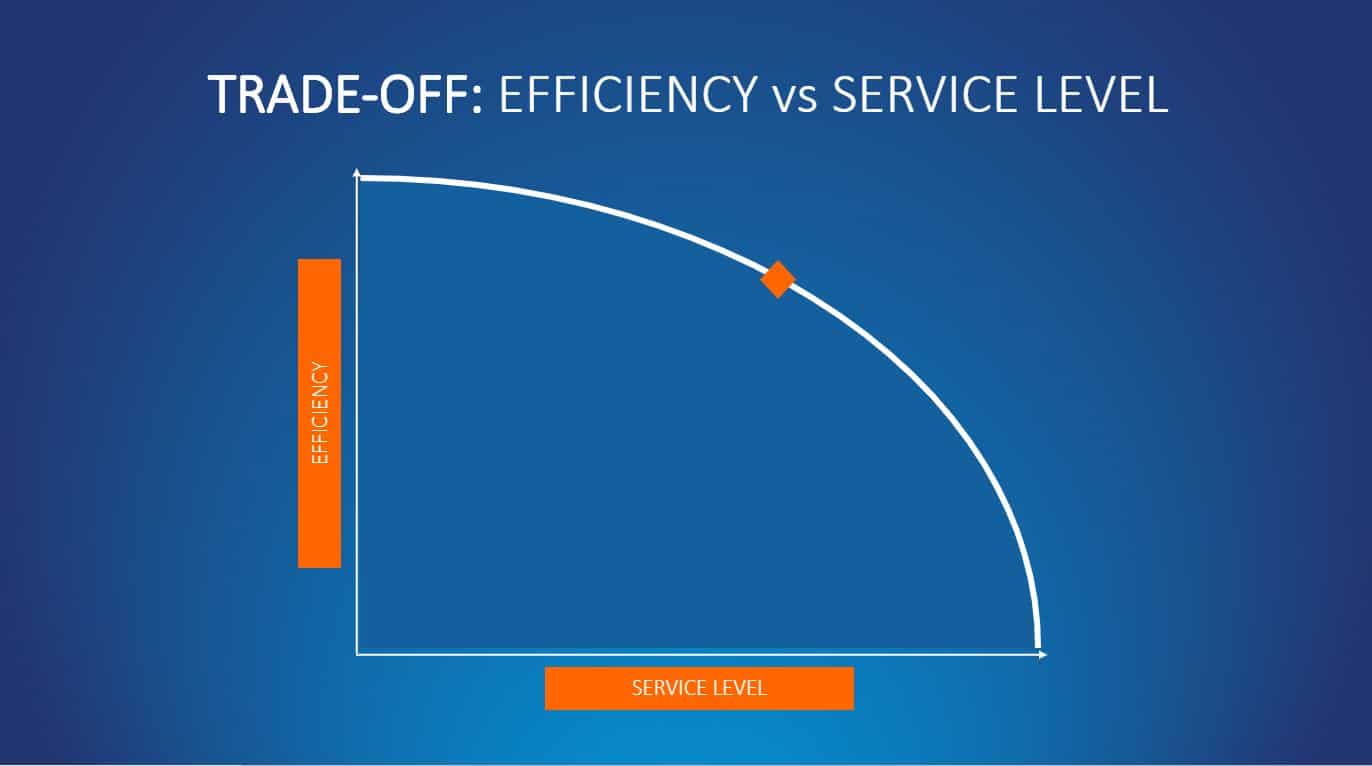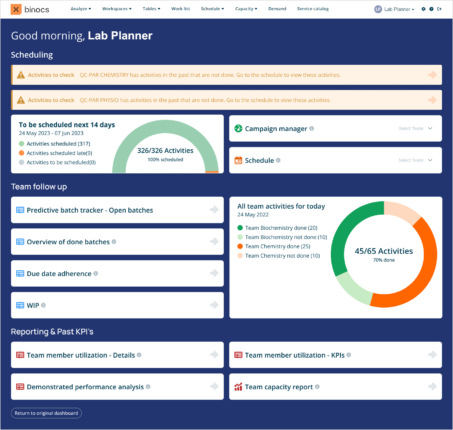
Efficiency vs service level in QC labs: the dishwasher dilemma
Labs focus on two main goals: execute samples with as few resources as possible (efficiency) while making sure that those samples are executed within the agreed timeframe (service level). However, efficiency vs service level is a constant battle: focus on efficiency too much, and service levels decrease; concentrate instead on planning adherence and efficiency will decrease.
The dishwasher dilemma
Compare the situation with an everyday scenario at home: I can wait to run the dishwasher until it’s filled (efficiency) but risk not having enough plates the next day. Or I can run the dishwasher every evening to make sure I always have plates (service level), but that’s not always the most efficient solution.
Prioritizing planning adherence – we need data!
So the question is: wait until the dishwasher is full (efficiency) or run it right now (service level)? The solution is relatively simple: we need to know how many plates we will need tomorrow and how many dishes are in the dishwasher. Based on this ‘data,’ you will decide what you need to do: wait or run it right now.
In a QC lab, planners have to make a lot of these decisions every day. Do we run these samples right now, or do we group those samples with the ones coming in next week? If we campaign, do we have the right competencies and equipment available next week to ensure our service level (or are we creating a bottleneck)?
You could have guessed, similar to our dishwasher example, and you need ‘data’ to solve this equation. Forward-looking data to get an idea of what demand you can expect, data on the resources your organization will have available to meet that demand, backward-looking data on expected lead times, average campaign sizes, …
How to activate your data?
Having this data is one thing. Activating all this data, so it supports your decision making every day (also when your best planner is on holidays) is another. Especially in an environment with lots of data, from a lot of different sources, in a lot of different systems and excel sheets.
How do you make those different data sources communicate? How do you bring it all together in such a way that it creates visibility across your teams, departments, and projects? In short: how on earth do we leverage all this data to optimize the balance between efficiency & the service level of our lab?
Centralized, structured data & automated planning efficience processes!
You can’t unless you centralize all data in one, intelligent system that can automatically navigate and connect your data – Binocs for example ( ). Based on those connections, Binocs automatically groups samples in campaigns. While doing that, it makes intelligent trade-offs between planning adherence & efficiency. You can configure that ‘intelligence’ by defining your campaign rules in Binocs. A few simple examples:
- If stability samples are nearing the max pull date, Binocs understands their priority should increase (triggering a campaign right now).
- If you have low priority samples, low priority project work for example, Binocs should prioritize efficiency: delay these samples and campaign them with the ones coming in next week.
- If you have a campaign with release samples, it should prioritize planning adherence. But instead of just running the campaign right now, let’s first determine whether this production batch will be on time anyway. It could be that there is another team that also needs to deliver specific tests for this production batch and that they are running late. If this is, in fact, the case, Binocs will suggest delaying the samples and run them in a more efficient campaign next week.
- Other rules can be integrated as well: different matrix means different campaign, perhaps you want multiple samples from the same production batch in various analysis campaigns,…
In summary: a little pitch for Binocs
Binocs’ strength is that it centralizes all data in one singular system and offers out of the box lab planning: demand (short, mid and long-term), resources (teams, competences, equipment, availabilities, …), priorities, campaign rules, etc. all in one user-interface. This allows Binocs to intelligently and automatically support the:
- Increase in efficiency: automatic scheduling, an intelligent grouping of samples, optimize campaign fill rates, and minimize planning white space.
- Increase in planning adherence: set-up a scheduling process to confirm to supply chain exactly which lots will be released when: automatic prioritization, run combination, manual priority overrides, … make this possible
- Optimization of the balance between efficiency & planning adherence.
Want to know more? Talk to an expert or request your free demo today! Curious about benefits of QC digitalization? Get to know with our case study!
More about planning
-
Increasing efficiency in QC labs is tough—but digital is making it easier. Learn 6 effective and proven methods for improving QC performance!Read more
-
4 tips for choosing the right laboratory resource planning software
Here are 4 tips that you should keep in mind when thinking about digitalizing your laboratory resource planning & scheduling?Read more -
Enhancing lab efficiency via co-creation: new Binocs landing page
This post explores the new personalized Binocs landing page feature and how co-creation principles were central to its design.Read more
Mathias Lasoen
Mathias is the Head of Growth Marketing for Binocs.







